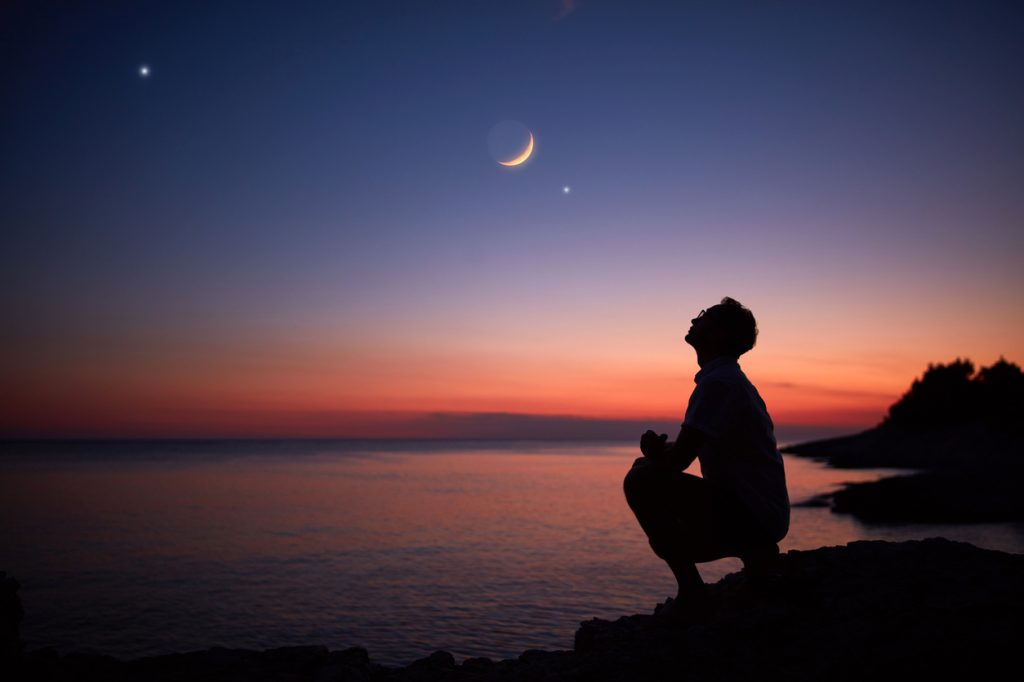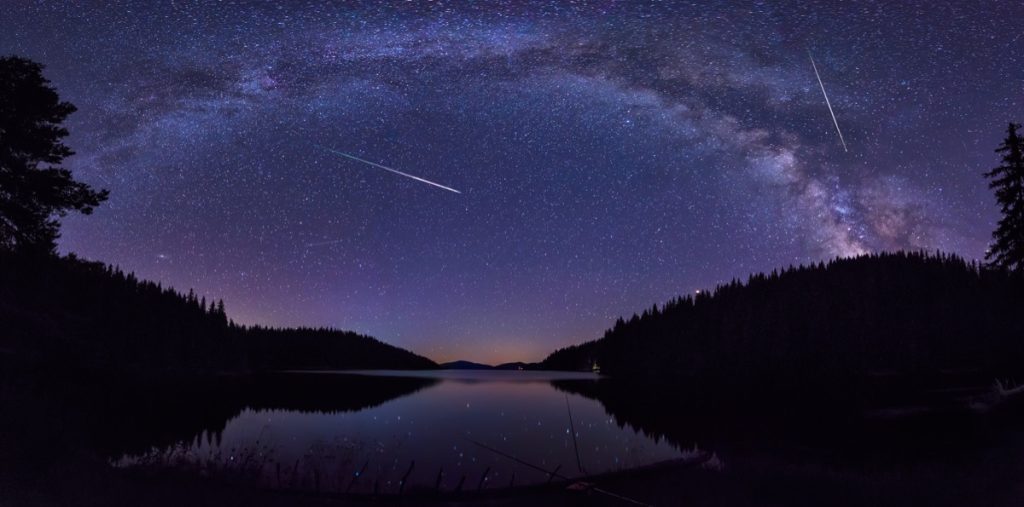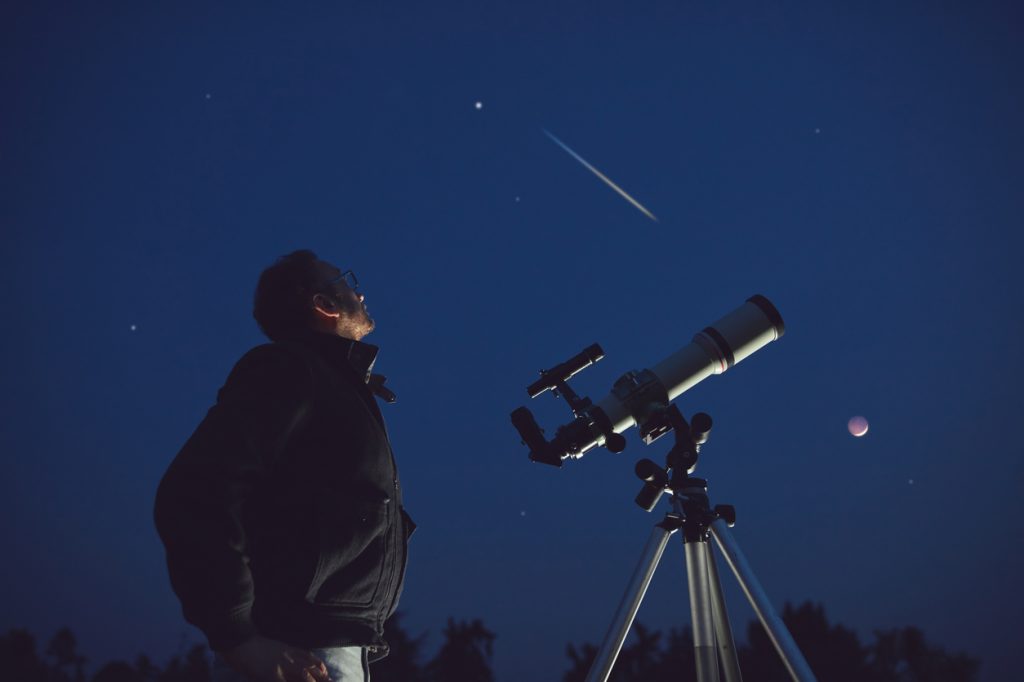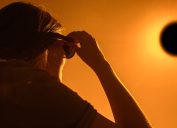Meteor Shower Will Make "Fireballs" in the Sky, Starting Saturday—Here's How to See It
Scientists say the display is famous for its "fast and bright" explosions in the sky.

Even though our planet is overflowing with natural beauty of its own, there's still something unique about taking in the wonders of the galaxy. Whether it's getting lucky enough to catch a passing comet or scoping out our nearest neighboring planets on a clear evening, the night sky can be a humbling source of amazement and wonder no matter where you happen to be on Earth. And if you're looking to take in a memorably good annual event, you should mark your calendar for the upcoming meteor shower that will make "fireballs" in the sky. Read on to find out how you can see the spectacle starting Saturday.
READ THIS NEXT: The Next Total Solar Eclipse Will Be the Last Until 2044, NASA Says.
The Lyrids meteor shower is set to begin this weekend.

Amateur astronomers won't have to wait until the Leonid or Perseid showers to take in an active night sky. The Lyrids meteor shower will begin in the coming days, putting on a show that stands out from other similar showers during the year, according to NASA.
The annual event stands out as one of the earliest recorded meteor showers, with its first mention dating back to Chinese records in 687 BC. It's fueled by the dust trail left behind by comet C/1861 G1 Thatcher, which was first spotted when it passed near Earth in 1861. But while the source itself will still be traveling further away from our planet for decades to come, its remnants provide a yearly show every April.
Meteors during the Lyrids look slightly different than other showers.

Besides being one of the oldest recorded meteor showers, the event also stands out for how they appear to those viewing it. Instead of the long, glowing tails that streak across the sky during other notable showers like the Perseids, the Lyrids tend to produce short, explosive bursts referred to as a "fireball," according to NASA.
And even though it may not be as heavy as its summertime counterpart, stargazers who set out to watch will still see plenty of activity. The shower typically averages about 18 meteors per hour during its peak, with some years surpassing that count, per NASA.
RELATED: For more up-to-date information, sign up for our daily newsletter.
You can start watching as early as this weekend before the shower peaks next week.

Even though the "shooting stars" themselves may only appear as flashes in the night sky, those looking to get a glimpse of the shower will have plenty of time to work it into their schedule. This year's Lyrids will begin on April 15 and increase in intensity until they peak on April 21 and 22, per NASA.
According to EarthSky, the meteor shower's radiant point is a bright star known as Vega in the Lyra constellation, which gives the event its name. Those in the Northern Hemisphere can find it by looking to the northeast not long after sunset when it becomes visible above the horizon, arching higher in the sky until reaching its height almost directly overhead around midnight.
Those watching the Lyrids from the U.S. also likely won't have to change their sleeping schedule to see them at their best, either. The peak will occur from around 9 p.m. through midnight on April 22, Forbes reports. Those who stay up later at night will likely get an even more dazzling display as meteors appear higher in the sky.
This year's shower is set up for some perfect viewing conditions.

While local weather will always play a factor in your view of the night sky, some other conditions will make this year's Lyrids particularly good for stargazing. According to EarthSky, a new moon occurring on April 19 means there will be minimal light interference, making it easier to spot the streaks and fireballs above. The slight crescent that emerges during the peak will also only minimally affect the experience.
Besides blocking off the prime times on your schedule, there are a few other ways to improve your meteor shower experience. If you can get a little out of town, it's best to pick a viewing area that's far away from city or street lights, NASA suggests. You should also plan to bring plenty of items to make yourself comfortable, including warm clothing and something to sit on that makes looking upward easy, such as a blanket, chair, sleeping bag, or hammock.
Once you've found the right location, sit with your feet facing east and lie flat on your back to take in as much of the sky as possible. It can take as much as 30 minutes for your eyes to completely adjust to the darkness, which includes avoiding glances at your phone. From there, you just have to lay back and take in the show.





















